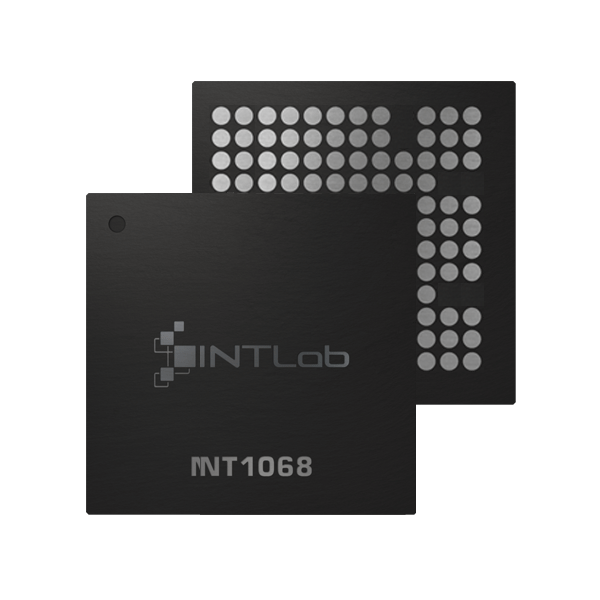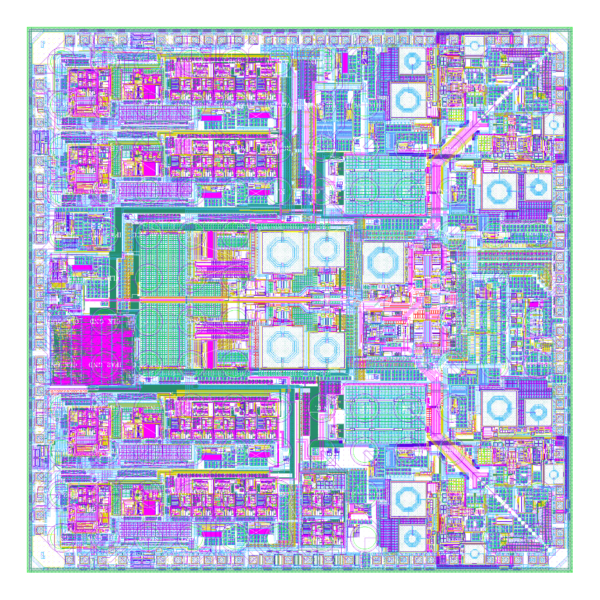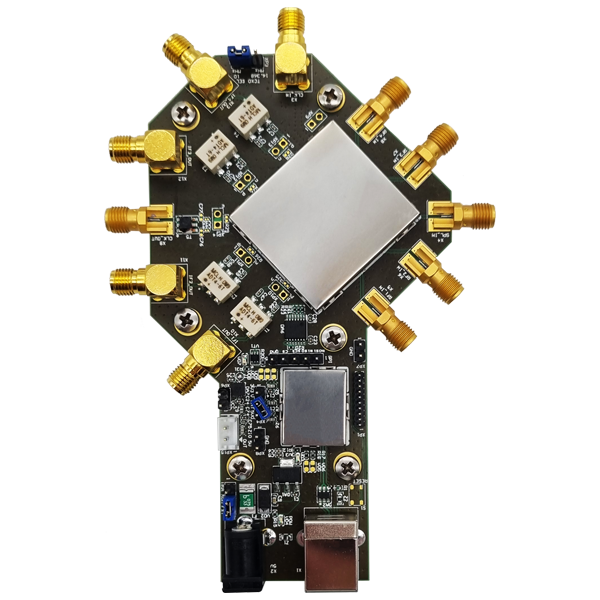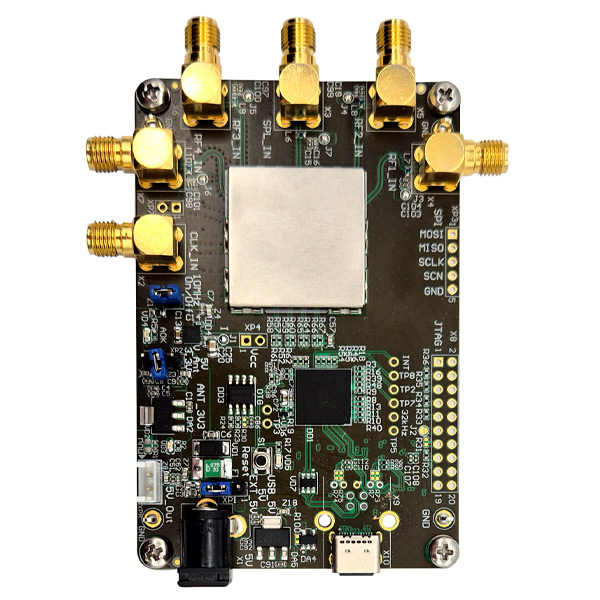NT1068 4-CHANNEL GNSS RF FE IC
CHARACTERISTICS
- 4-Channel RF FE IC, 2 PLLs or 1 PLL
- GPS/GLONASS/Galileo/BeiDou/NavIC/QZSS
- L1/L2/L3/L5/E1/E5/E6/B1/B2/B3
- 5.12×5.2mm WLCSP or 10x10mm QFN88 packages
- The manufacturing of this IC is available for our customers using a design documentation provided by NTLAB UAB under a license agreement
NT1068 is a four-channel RF Front-End IC for the reception of Global Navigation Satellite System (GNSS) signals (GPS, GLONASS, Galileo, BeiDou, NavIC, QZSS) and also signals of satellite-based augmentation systems like OmniSTAR at all frequency bands in various combinations: L1, L2, L3, L5, E1, E5a, E5b, E6, B1, B2, B3. NT1068 inherits all the features of NT1065 including pin-to-pin compatibility. The key benefits of NT1068 over NT1065 are low power consumption and input RF splitter with configurable channel combination. When high performance is not needed (e.g. for tracking mode) NT1068 can be ‘on-fly’ switched to ECO mode to furthermore reduce power consumption.
There is a specific configuration to acquire signals of L2 band and L1+L3/L5 bands by single chip. Extended functionality of NT1068 allows receiving all Galileo signals (E1, E5a, E5b and E6) or other signal combinations in L1/L2 band and L1+L3+L5 bands. As a benefit one can discover wide possibilities of improving the positioning accuracy down to centimeter range without taking RTK technique. Being a low-power RF FE IC with supply voltage from 1.8 to 3.3V it can be used in various mobile applications for high precision positioning. Each setting, including RF input, output signal frequency bandwidth, AGC options, mirror channel suppression option, etc., can be set for every channel individually.
NT1068 does also integrate two fully independent frequency synthesizers that have the common reference (TCXO) input making LO signals coherent in terms of frequency. Channel#1 and channel#2 are supplied with common LO signal or two different LO signals generated in PLL “A”, while PLL “B” is assigned for channels #3 and #4. For specific applications PLL “B” can be also used to feed channel#1 along with channels #3 and #4, PLL “A” – to feed all four channels with single LO signal.
FEATURES NT1068 RFIC
- L1, L2, L3, L5 bands single conversion super heterodyne receiver with low-IF architecture
- Four independent configurable channels, each includes preamplifier, image rejection mixer, IF filter, IFA, 2-bit ADC
- 1-to-n RF splitter input (n=2,3,4) that can be used along with separate RF inputs for other channels
- Signal bandwidth up to 33MHz supports GNSS high precision codes such as P-code in GPS or wideband E5 Galileo
- Dual adoptable AGC system (RF + IF) or programmable gain
- High dynamic range with 1dB compression point more than ‒21dBm
- Analog differential output with two options of voltage swing 0.2/0.47Vp-p and 0.4/0.98Vp-p (sine wave/noise) or 2-bit ADC digital output data (CMOS or LVDS)
- Two independent fully integrated synthesizers with flexible LO and CLK frequencies selection
- Wide range of chip supply voltage (from 1.8V ±5% to 3.3V ±10%)
- Low power consumption (54mW per channel) and power economy mode (45mW per channel)
- Embedded temperature sensor
- SPI interface with easy-to-use register map
- Individual status indicators of main subsystems (available in SPI registers) and cumulative status indicator (AOK, available both as a separate pin and in SPI registers)
- Two form-factors: 5.12×5.2mm WLCSP and 10×10mm QFN88 package
APPLICATIONS
- GNSS based positioning systems
- GNSS based goniometric systems
- In-vehicle navigation systems
- GNSS based driverless car systems
- Professional drones





